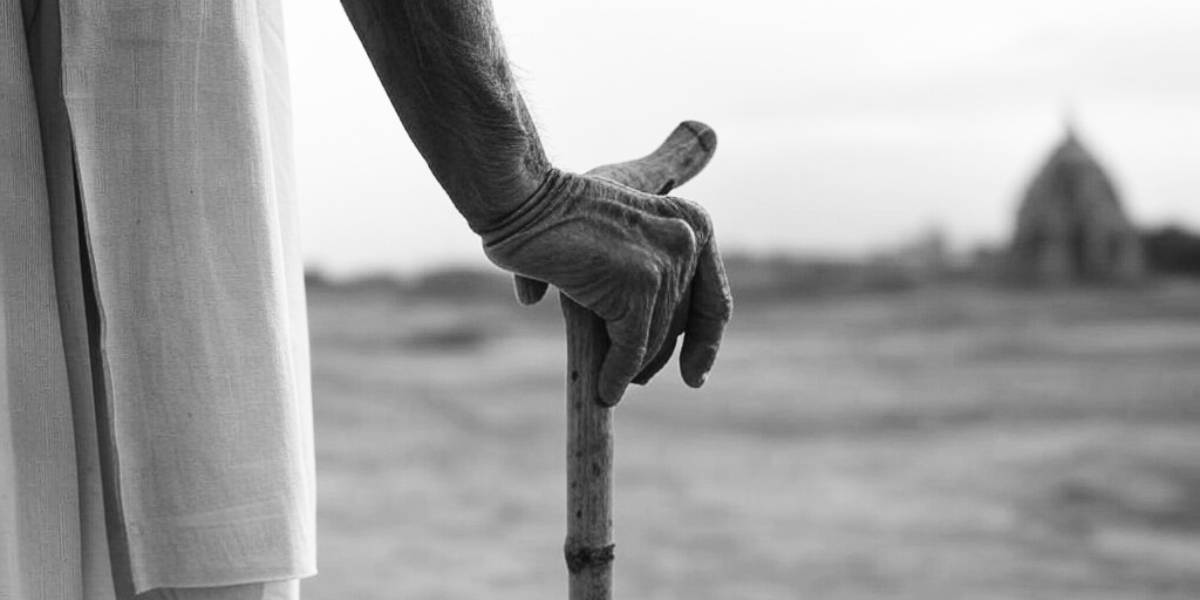A new study found that nearly one in three were prescribed medicines that might not be suitable for them, one in five were not receiving important medications they actually needed, and one in five seniors were taking medicines on their own without a doctor’s advice.
Published Feb 15, 2025 | 7:00 AM ⚊ Updated Feb 15, 2025 | 7:00 AM

Synopsis: A recent study has revealed alarming gaps in elderly healthcare in India, with nearly one in three seniors receiving inappropriate prescriptions, one in five missing essential medications, and another one in five resorting to self-medication without medical guidance. The widespread use of multiple medications, often without proper oversight, increases the risk of adverse drug interactions, side effects, and medication non-adherence.
From long waits at overcrowded hospitals to navigating a complex web of prescriptions, India’s elderly often find themselves sidelined in a healthcare system that lacks tailored support for their needs.
Many rely on self-medication, unregulated home remedies, or multiple prescriptions without proper oversight, leading to serious health risks.
With limited geriatric care services and a growing elderly population, a study based on the door to door survey finds that about one in three seniors were taking multiple medications.
Nearly one in three were prescribed medicines that might not be suitable for them, one in five were not receiving important medications they actually needed, and one in five seniors were taking medicines on their own without a doctor’s advice.
India’s ageing population is expanding rapidly, with people aged 60 and above making up 10.1 percent of the country’s total population as of 2021. This demographic shift brings with it a growing burden of chronic diseases, which in turn increases dependence on medications.
The simultaneous use of multiple drugs, known as polypharmacy, is often necessary for managing multiple illnesses but can also introduce risks such as adverse drug interactions and complications.
In addition, many older adults turn to self-medication, often without a complete understanding of potential consequences. These factors make medication management a critical issue in elderly healthcare.
To address this concern, a study was conducted across six major Indian cities – New Delhi, Chennai, Kolkata, Ujjain, Patna, and Guwahati – to assess the extent of polypharmacy and self-medication among older adults.
The study aimed to uncover the underlying patterns, risk factors, and associated dangers, providing insights that could help shape interventions and policy changes for safer medication practices in the elderly population.
The study followed a cross-sectional design, collecting data from 600 older adults.
The study found that one in three older adults (33.7 percent) was taking five or more medications every day. The most commonly prescribed medications reflected the high burden of chronic diseases in this age group:
The study also identified key factors that made an older adult more likely to experience polypharmacy:
While taking multiple medications is sometimes necessary for managing chronic conditions, it also increases the risk of drug interactions, side effects, and medication non-adherence.
While polypharmacy is sometimes necessary for treating multiple conditions, it also brings the risk of medication overload, potentially leading to drug interactions, side effects, and reduced adherence to prescribed treatments.
“Polypharmacy is often associated with adverse outcomes, such as falls, frailty, disability, and mortality, in older adults, depending on the type of medicine included,” the study states.
A deeper examination of prescriptions found that one out of four seniors (28.8 percent) was taking at least one potentially inappropriate medication (PIM) – a drug that could be either unnecessary or harmful. The most frequently misused medications included:
Equally concerning was the issue of Potential Prescribing Omissions (PPOs), where 20.3 percent of older adults were missing essential medications that they should have been receiving. The most commonly omitted drugs were:
Beyond prescribed medications, the study revealed that one out of five older adults (19.7 percent) was self-medicating, taking drugs without consulting a doctor.
The most commonly self-medicated drugs were:
Some seniors were at a higher risk of self-medication:
Even more concerning was the lack of awareness about the dangers of self-medication:
“Importantly, a significant proportion of individuals engaging in self-medication lack adequate knowledge about its risks and safe practices, indicating the need for targeted education and awareness campaigns to promote responsible self-care behaviors and prevent adverse outcomes,” the study states.
It further added that self-medication for older adults can be dangerous even with over-the-counter medicines compared to other age groups because of age-related changes in organ functions.
The use of unsafe self-medication carries a risk to the user and the community (e.g., the spread of antimicrobial resistance).
The findings of this study point to serious health risks for India’s elderly population. Polypharmacy increases the chances of adverse drug interactions, frailty, falls, disability, and even mortality.
Inappropriate prescriptions further add to the burden, leading to unnecessary side effects, poor treatment adherence, and increased healthcare costs. Meanwhile, self-medication remains an unregulated and potentially harmful practice, particularly with antibiotics and painkillers.
Beyond individual health concerns, India’s healthcare system lacks dedicated geriatric care infrastructure, leaving older adults to navigate complex medication regimens on their own.
The unregulated sale of medicines also exacerbates the problem, allowing easy access to prescription drugs without proper medical oversight.
(Edited by Dese Gowda)
